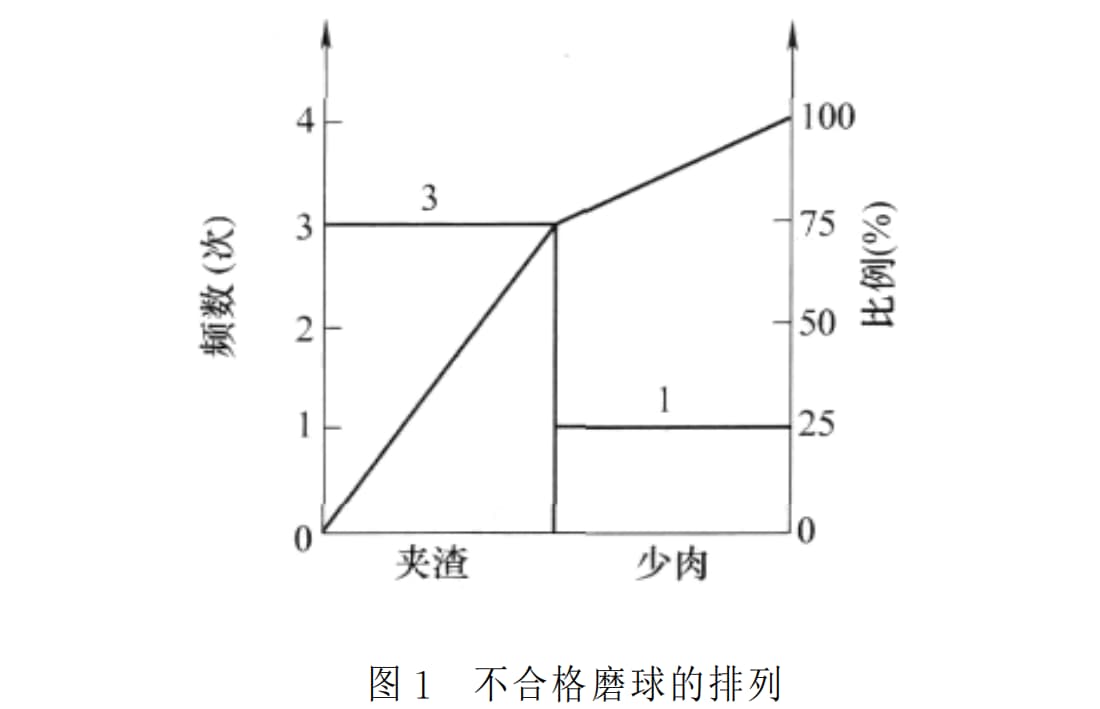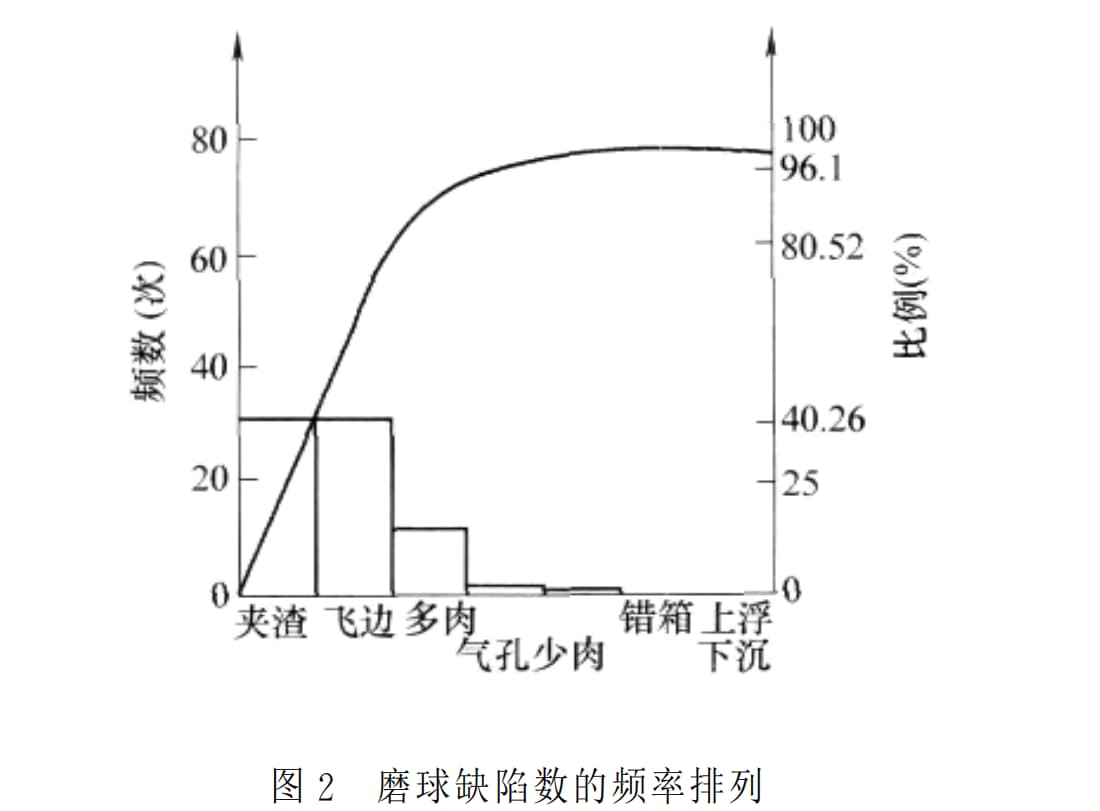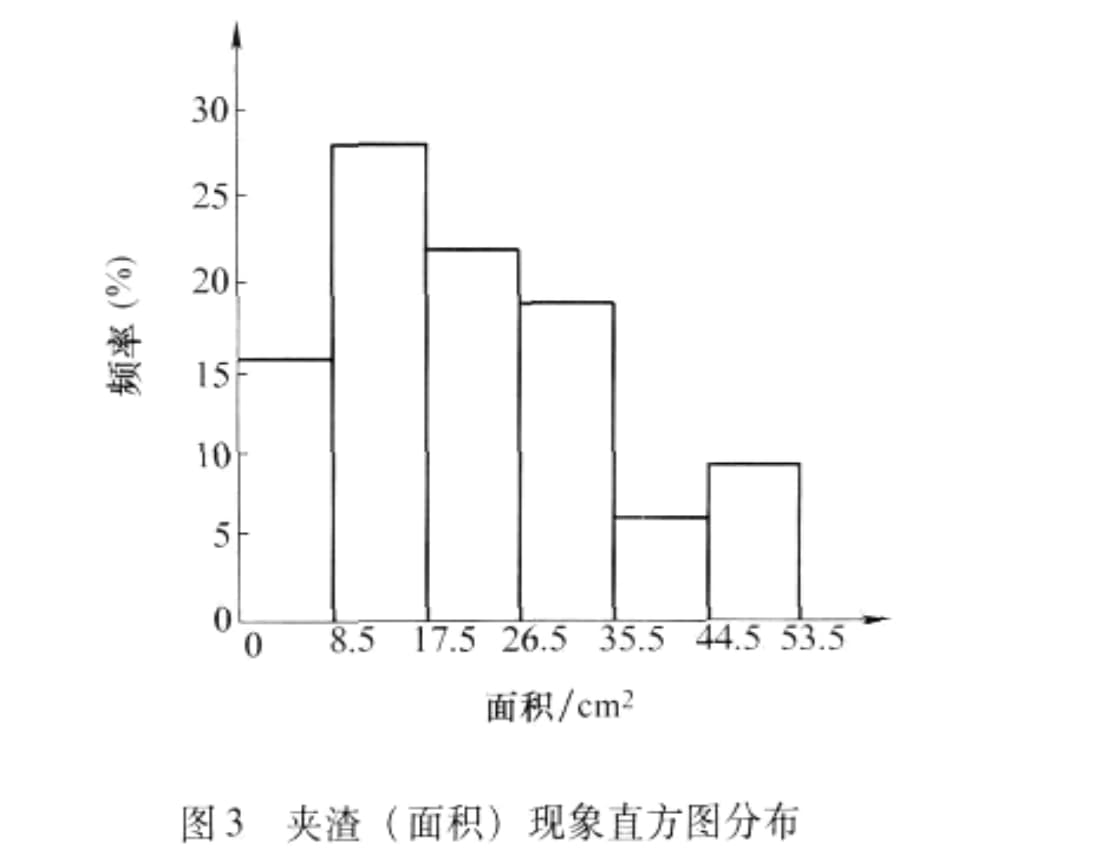Analysis and Countermeasures of the Causes Affecting the Surface Quality of Casting Grinding Balls (1)
Jinduicheng Molybdenum Industry Group Co. , Ltd. Mechanical and Electrical Repair Factory
(Shanxi Hua County, 714102) He Guoqiang, Wang Wei)
Abstract: The main reasons which affect the surface quality of the casting grinding balls are analyzed and the corresponding countermeasures are made. The quality of the casting grinding ball, which is the most easily worn part in the mining cement industry, directly influences the product quality and economic benefit of the users. Finding out the main factors that affect the surface quality of grinding ball is a common concern of foundry technicians. In this paper, the main influencing factors are listed and analyzed according to statistical data, and corresponding countermeasures are worked out.
1.Data statistics
Sampling 120mm casting grinding ball is 8t in batch, 32 samples are sampled, 4 non-conforming products (including 6 with slag depth greater than 3mm, 2 with slag area greater than 45.2 cm2 and 1 with little meat) . Among the qualified products, there are 28 grinding balls with slag inclusion, 2 grinding balls with Air Hole, 31 grinding balls with flying edge and 12 grinding balls with meat defect.
2.Data analysis
The number of defects found in this random inspection was arranged (see figure 1, figure 2) , to find out the relevant data of the main defects, to determine the control direction, to take measures to provide a basis.
As can be seen from figure 1, slag inclusion caused by unqualified grinding ball 6, accounting for 75% of the total number of unqualified products, should be listed as the main control object.
As can be seen from Fig. 2, the number of defects caused by slag inclusion and flash is 6 each, accounting for 40.26% of the total number of defects respectively. The defects of grinding balls are mainly slag inclusion and flash
From the histogram of the slag inclusion (area) phenomenon (see figure 3), it can be seen that the mean value of the distribution is consistent with the standard (45.2 CM2). Still, there are 11 grinding balls in the interval, accounting for 34.375% of the total spot check, so the control of slag inclusion should be strengthened.
As can be seen from the flash histogram (see figure 4), which is abnormal; although the value of flash (0.5 mm, 1mm) did not reach the upper limit of 3mm, control should be strengthened to avoid further expansion of flash defect, resulting in an unqualified casting grinding ball.







